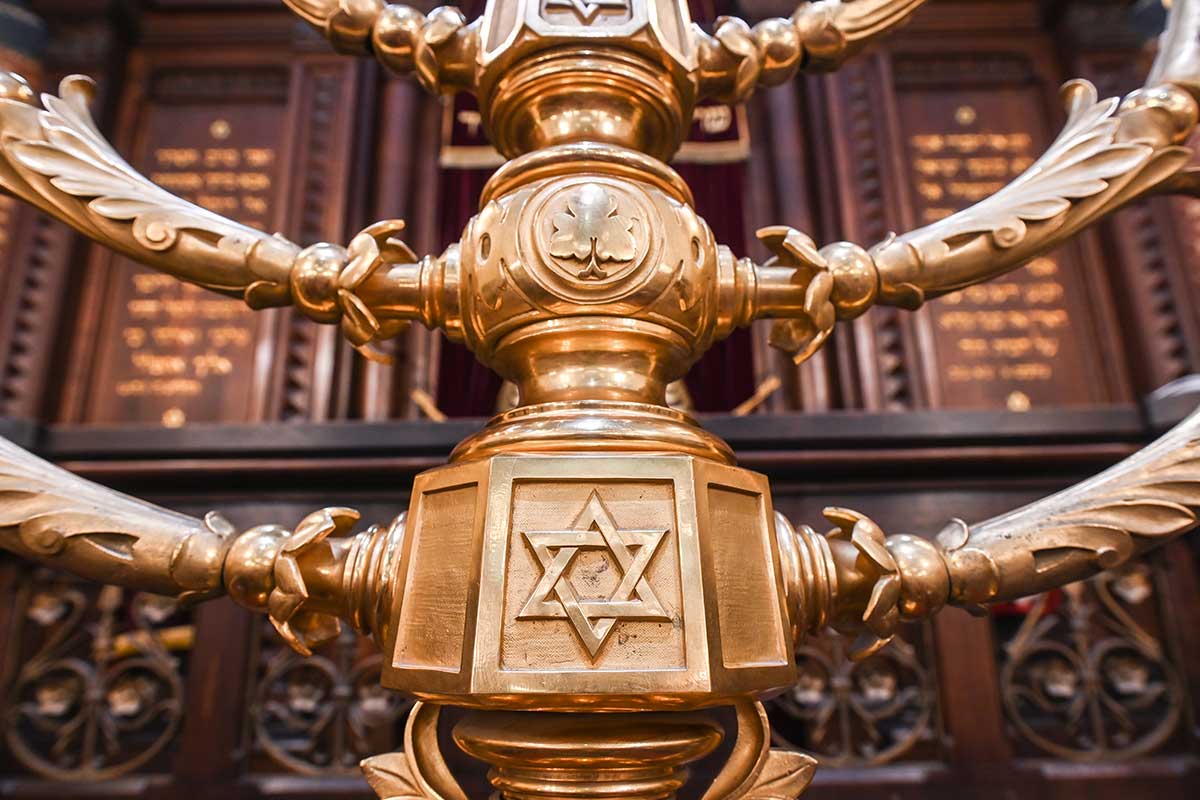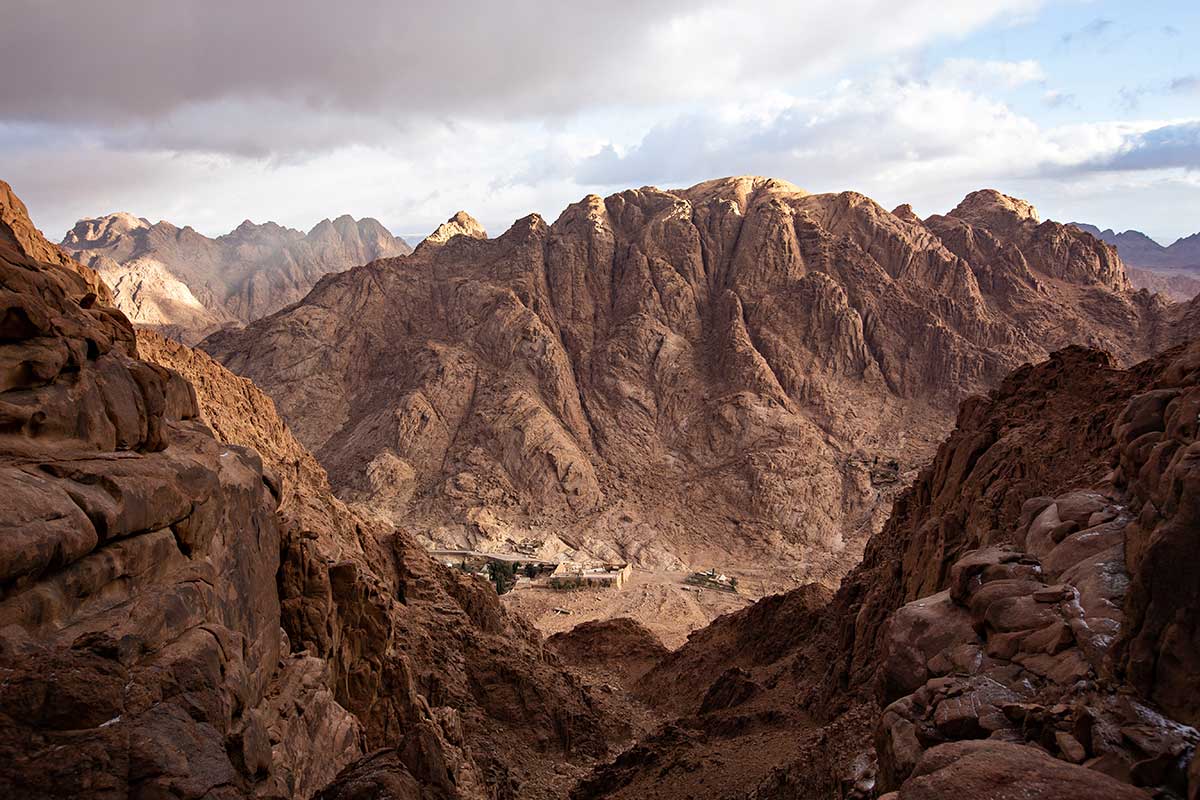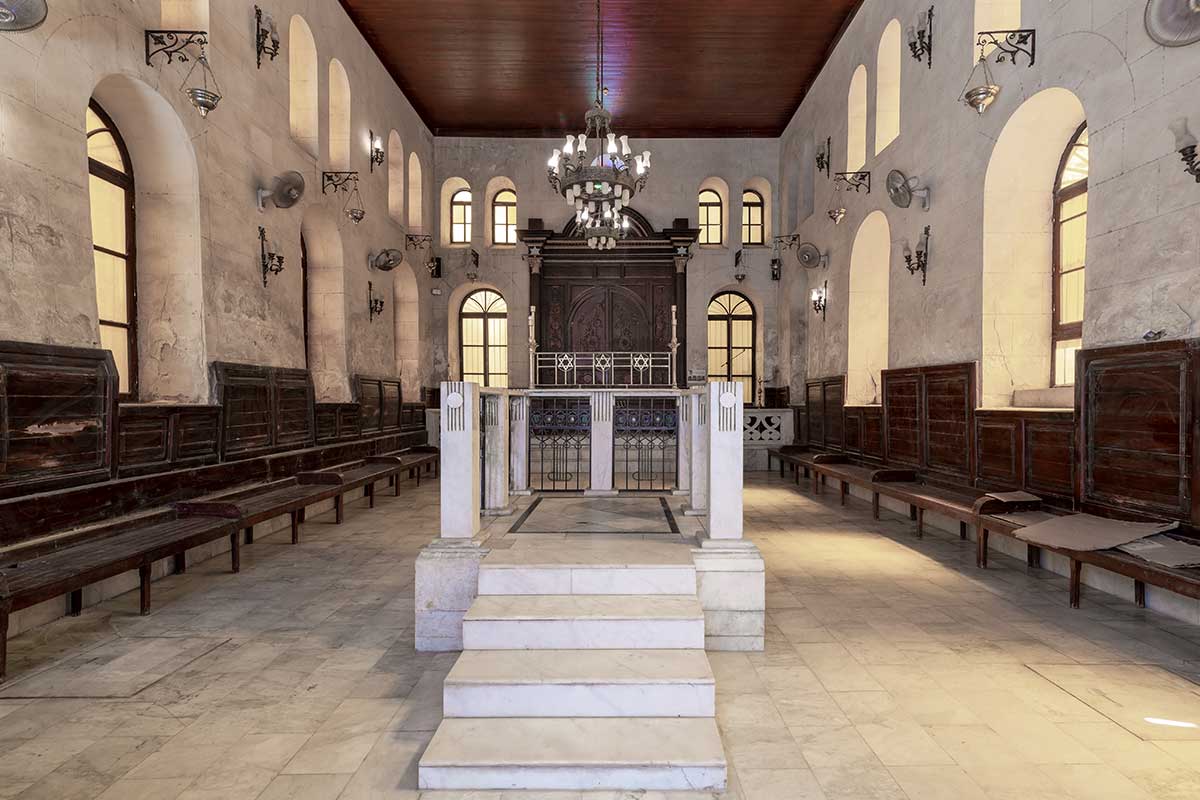The relationship between Jews and Egypt is as old as the religion itself. Today, despite their significantly reduced numbers, there are still places of great interest that can serve as the cornerstone of a themed trip. That’s why we provide you with information on this page and remind you that Egipto Exclusivo can create a personalized program tailored to your needs, complete with guided visits to all these places.
Judaism is one of the oldest “living” religions in the world. While it is difficult to establish a specific chronology, it can be said that its emergence and early development coincided with the golden age of the pharaonic civilization. Thus, the interrelation between Jews and Egypt is very close, closer than what a person not well-versed in the subject might imagine.
Abraham, who is considered the founder of Judaism, was the father of Isaac, and Isaac was the father of Israel (Jacob, in Christianity), who had 12 sons. These descendants gave rise to the Twelve Tribes of Israel, who were enslaved in Ancient Egypt. Later, they returned to the Promised Land, as described in the Book of Exodus, which is one of the five books that make up the Torah (and also one of the many that make up the Old Testament).
According to the Book of Genesis (another sacred book for Judaism), the Twelve Tribes settled in the city of Rameses and departed from there on their return. Historiography generally estimates the date of their return to be around 1250 BC, during the reign of Pharaoh Ramses II.
Moses, born in the region of Goshen in Ancient Egypt, was the great leader of the liberation from slavery and subsequent journey towards the Promised Land. He is considered a prophet in Judaism, Christianity, and Islam, and is renowned for his role in other sacred episodes that occurred before or during the Hebrew exodus, including the revelation of the Burning Bush and the delivery of the Tablets of the Law or the Ten Commandments on Mount Horeb (Mount Sinai).
Moses is believed to have engaged in direct dialogue with the Pharaoh in order to secure the liberation of the Hebrews. After the Pharaoh was hit with ten plagues sent by Yahweh, he finally agreed to let the Hebrews go.

In addition to the accounts found in sacred books, there are also historical documents that provide evidence of the presence of Jews in Egypt. One such example is the Elephantine papyri, which suggest the existence of a temple dedicated to Yahweh on an island in the city of Aswan around the 5th century BC.
In later centuries, during the Ptolemaic period, the Greek dynasty promoted a cultural and intellectual flourishing in the capital city of Alexandria, which included contributions from the Jewish community. Notably, the works of Philo of Alexandria (1st century BC-1st century AD) were significant in this regard.
Egypt has been a significant place of refuge for the Jewish community, particularly after the second major exile of the Jewish diaspora. Despite being in a minority, they established a strong community, though coexistence was not always peaceful, especially after the Arab conquest.
Despite this, the Ben Ezra synagogue in Cairo (formerly El Fustat) and other important synagogues were built. A lineage of local rabbis also emerged, still renowned among Jews in Egypt and other countries. One famous name that stands out among Spaniards, particularly from Cordoba, is Maimonides, who served as the physician of Saladin.
During the Ottoman era, coexistence deteriorated, but the Jewish community experienced a golden age again with the opening policy of the government of Mehmet Ali and the rise of Egyptology in the 19th century. Members of the Jewish community were involved in numerous projects, particularly those related to urban development in the center of Cairo.
Egypt had a well-established Jewish community until the mid-20th century, with an estimated population of 50,000 to 100,000. Associated with this community in the country, there are different names that stood out in different areas of society, such as Gaby Aghion, born in the then multicultural Alexandria and who later founded the fashion firm Chloé in Paris.
However, the creation of the State of Israel in 1948 and the ensuing wars between Egypt and Israel led to a dramatic decrease in the Jewish population. Many left during the Aliyah, the mass migration to Israel, and the conflicts that followed.
Today, it is challenging to determine the number of Jews in Egypt. Some sources suggest there are only a few dozen or a few hundred, with an emphasis on preserving the legacy of Judaism in the country. This legacy is visible in the places we will explore in the following section.
If you’re planning a trip to Egypt and want to explore the most iconic places for Jews, then the sites we’ve compiled below are a must-visit on your itinerary. These places hold enormous significance for tourists of the Jewish faith, but they’re also of great interest to travelers of any other religion, as they’re steeped in rich history.
Mount Horeb, also known as Mount Sinai for Christians and as Yebel Musa for Muslims, is a breathtaking place that evokes strong emotions in visitors, especially those who climb to its summit and witness the first rays of sunlight illuminating the unique rocky peaks of this mountain range.
According to Exodus and Deuteronomy, Moses ascended Mount Horeb to receive the Tablets of the Law from Yahweh, which included the Ten Commandments. These commandments were a set of rules that the Israelites were expected to follow, as they lacked a fixed set of laws to guide their behavior.
In case you need a reminder, here are the Ten Commandments in a concise form:
The summit of Mount Horeb is located at an altitude of 2,285 meters above sea level, with the ascent starting from a considerable altitude of approximately 1,580 meters above sea level, where the Monastery of St. Catherine is located. Those who wish to see the sunrise from the summit must spend the night on the mountain in the plain of Elijah and be well equipped with warm clothing and a sleeping bag, as it gets cold at night, even in summer.
There are two ways to ascend to the summit of Mount Horeb, which converge in the plain of Elijah:

Managed by the Greek Orthodox Church of Jerusalem and with mainly Christian buildings (except for the mosque within its walls), the Monastery of St. Catherine is an essential visit for anyone interested in exploring the sacred places of Jews in Egypt.
The site’s significance comes from its association with the Burning Bush – a branch of the original plant that caught fire but was not consumed. According to Exodus, Moses encountered the Burning Bush and interpreted it as a manifestation of Yahweh. In that communication, he was given the mission to liberate his people and guide them back to the Promised Land.
Despite the dwindling number of Jews in Egypt, the country still houses several synagogues, some of which have recently been restored and hold priceless artifacts. One of the best examples of this is the Ben Ezra Synagogue, located in the Old Quarter of Cairo.
The present-day structure dates back to the 9th century and was restored in the 12th century by the Rabbi of Jerusalem, Abraham Ben Ezra, after whom it is named. The synagogue also holds great significance in Jewish history, as it is associated with several sacred episodes. For instance, it is believed to have been a gathering place for Jews in Egypt following the Babylonian king Nebuchadnezzar’s destruction of the Temple of Jerusalem in the 6th century BC, which prompted the prophet Jeremiah’s exodus to Egypt.
According to Jewish tradition, the Ben Ezra Synagogue or its vicinity is also where an Egyptian princess, believed to be named Termutis (according to some sources), discovered baby Moses in a basket floating on the Nile river, saving him from certain death. She then ordered him to be breastfed by a Hebrew woman, who turned out to be his own mother, Jochebed.
In the late 19th century, the synagogue became the site of an astounding discovery – the Geniza Documents. These are around 250,000 manuscripts that shed light on the lives of Jews in Egypt and North Africa from the 11th century onwards, and are now scattered in various libraries worldwide.

The Jews of Egypt built numerous synagogues, but unfortunately, most of them are not preserved. Others have survived in various states, which we list below:
All these places are included in our programs around the country, and we also offer excursions from different locations. For example, if you plan to arrive from Israel through Taba to spend a vacation in the southern Sinai, you can contact us to discover these sacred and unforgettable sites.
We can also organize pilgrimage trips to delve into the history of Jews in Egypt, providing a spiritual component to the experience. No matter what you are looking for on your trip, Egipto Exclusivo can make it possible. Contact us today to plan your unforgettable journey.
Fill out the form below to receive a free, no-obligation, tailor-made quote from an agency specialized in Egypt.
Travel agency and DMC specializing in private and tailor-made trips to Egypt.
Mandala Tours, S.L, NIF: B51037471
License: C.I.AN-187782-3